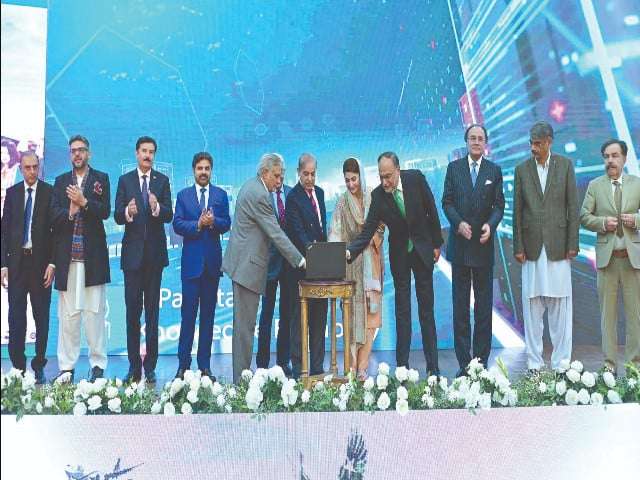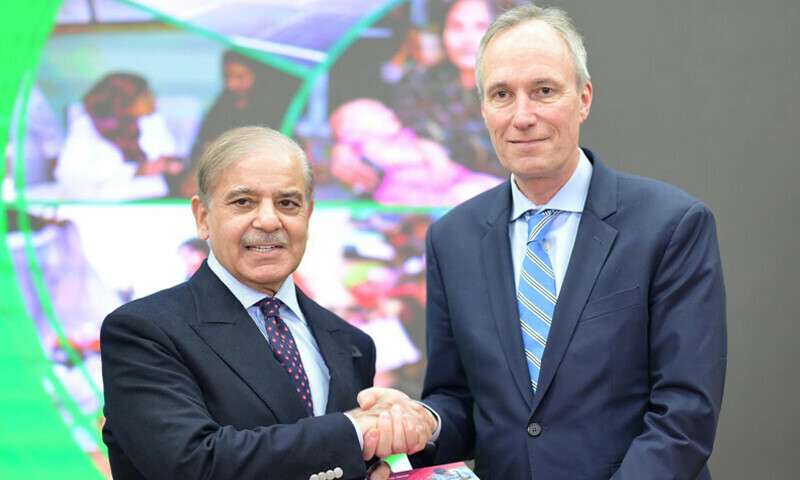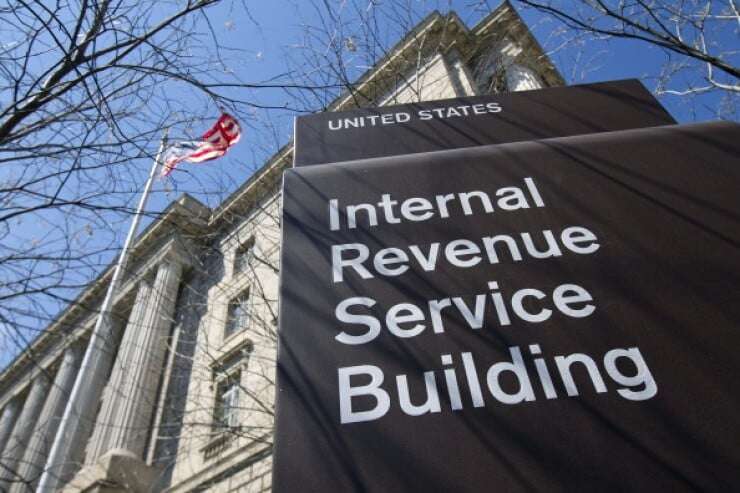Introduction
The launch of the economic plan for 2025-2030, titled Uraan Pakistan, has sparked considerable conversation regarding Pakistan’s economic future. The plan promises to address crucial issues such as export-led growth, food and water insecurity, and energy reforms. However, despite raising the right concerns, the plan has faced criticism for its lack of actionable substance, and it’s difficult to ignore the resemblance to its predecessor, Vision 2025. As the country looks forward to economic stabilization, the same mistakes from past administrations loom large, raising concerns about the future of Pakistan’s economy.
Revisiting Vision 2025: A Tale of Unfulfilled Ambitions
The Vision 2025 report, launched by the PML-N government, was supposed to be a blueprint for Pakistan’s economic uplift. It outlined 25 ambitious goals, many of which have proven to be unrealistic and unattainable. For instance:
- Literacy rate: Aimed to increase to 90%, but today it stands at a mere 62%.
- Tax-to-GDP ratio: Expected to rise to 18%, but it has stagnated at around 9%.
- Exports: Were projected to surge from $25 billion to $150 billion, yet they remain stuck at $32 billion, a significant decline in real terms.
Despite these glaring failures, the government’s current plan shares several similarities with Vision 2025, which raises questions about whether it too will fall short of expectations.
A Familiar Pattern: Unmet Goals and Blame-Shifting
One of the major flaws of both plans is their tendency to set outlandish targets without establishing a solid framework to achieve them. The new Uraan Pakistan plan, much like Vision 2025, envisions Pakistan reaching upper-middle-income status. However, the timeline has been pushed back from 2025 to 2035, which suggests that even the planners are aware of the challenges ahead. Both plans also blame “political disruptions” for their lack of progress, a convenient excuse that makes the failure seem beyond their control.
This repetition of lofty promises and failed outcomes illustrates a pattern of recycled economic plans that lack genuine substance. It reflects a broader issue in Pakistan’s political and economic culture: the absence of long-term vision and the continuous cycle of political instability.
The Rentier Economy: A Key Obstacle to Progress
What is a Rentier Economy?
Pakistan’s economic challenges are deeply rooted in its rentier economy. A rentier economy is one where national revenue is primarily derived from rents—income from owning or controlling resources or assets rather than from domestic production. These rents can come from natural resources, geostrategic positioning, remittances, or even foreign aid.
Historically, Pakistan’s reliance on external rents has shaped its economic policies. For instance, the country has benefitted from American aid during the Cold War, the Soviet-Afghan War, and the War on Terror. This reliance on external inflows has reduced the need for domestic industries to grow, and as a result, Pakistan’s export sector has remained underdeveloped.
The Impact of External Rent Dependency
During periods of American assistance, Pakistan’s economy saw temporary growth, but it was growth based on imports and consumption rather than exports. This short-term economic expansion, however, failed to develop Pakistan’s export capacity or diversify its economy. As these external rents have diminished, particularly after the US withdrawal from Afghanistan, Pakistan faces increasing challenges in maintaining economic stability.
Moreover, as Pakistan transitions from being a strategic ally of the US to a key player in the US-China rivalry, its economy is losing the benefits it once derived from military aid, loans, and economic support from “friendly” countries.
Lack of Reform: Why Change is Hard
Powerful Lobbies and Political Resistance
Pakistan’s political and economic elites have little incentive to push for the deep economic reforms needed to stimulate growth. Decades of external financial support and easy loans have made informal sectors like real estate and retail more appealing than developing local industries. The political elites benefit from these sectors and are reluctant to introduce reforms that could reduce their power or influence.
Moreover, any attempts to implement tax reforms or industrial changes are met with resistance from powerful lobbies, leading to political gridlock. Governments shy away from making tough decisions because of the political costs involved.
The Rentier Mentality: A Hindrance to Sustainable Growth
The most critical obstacle to reform in Pakistan is the rentier mentality—a mindset where the ruling class views economic success as a matter of chance rather than hard work. This mentality is rooted in a belief that external rents, rather than internal productivity, are the key to success. This leads to a focus on short-term fixes and external solutions, like seeking foreign investment, rather than addressing the systemic problems in the economy.
The Role of Foreign Investment and the SIFC
The Special Investment Facilitation Council (SIFC) has been introduced as a potential solution to attract foreign investment from countries like Saudi Arabia, the UAE, and China. While this may provide short-term relief, it does little to address the fundamental issues that lie at the core of Pakistan’s economic instability. If foreign investments fail to materialize at the required scale, Pakistan will be left in a precarious position, just as it has been in the past.
Until the Pakistani government takes a hard look at the root causes of its economic woes and implements meaningful reforms, it is unlikely that external investments will solve its problems in the long run.
The Road Ahead: Can Pakistan Break Free from Its Economic Trap?
Political Will for Reform
For Pakistan to break free from its economic stagnation, there needs to be a significant shift in political will. Policymakers must recognize the need for a diversified economy based on local industries, with an emphasis on exports and domestic growth. The powerful lobbies that dominate sectors like real estate and retail must be addressed, even at the cost of short-term political fallout.
Diversification and Self-Reliance
Pakistan must shift its focus from external sources of income to domestic growth and productivity. This means developing local industries, strengthening the export sector, and fostering an environment conducive to entrepreneurship and innovation. Only through economic diversification can Pakistan reduce its dependence on external rents and create a sustainable path to growth.
Conclusion
The release of the Uraan Pakistan economic plan is yet another attempt to revive Pakistan’s economy through recycled ideas and lofty promises. However, unless the government addresses the underlying causes of its economic instability—such as the rentier economy, political resistance to reform, and the rentier mentality—it is unlikely that the country will achieve the ambitious goals set out in the plan. The real challenge lies in making the tough decisions necessary for long-term change. Only then can Pakistan hope to break free from the cycle of economic instability and pave the way for a more prosperous future.
FAQs
1. What is the Uraan Pakistan plan about?
The Uraan Pakistan economic plan is the government’s five-year roadmap focusing on export-led growth, addressing food and water insecurity, and implementing energy reforms.
2. Why did Vision 2025 fail?
Vision 2025 failed due to unrealistic goals, lack of political will, and reliance on external rents rather than focusing on sustainable internal economic growth.
3. What is a rentier economy?
A rentier economy is one where the majority of national income is derived from external rents, such as foreign aid, remittances, or resource-based income, rather than from domestic production and industrial growth.
4. Why is reform difficult in Pakistan?
Reform is difficult due to the dominance of powerful business lobbies, a lack of political will, and a rentier mentality that prioritizes short-term external solutions over long-term internal reforms.
5. How can Pakistan break free from its economic struggles?
Pakistan can break free by focusing on local industrial growth, strengthening exports, addressing political resistance to reform, and reducing its dependency on external sources of income.



